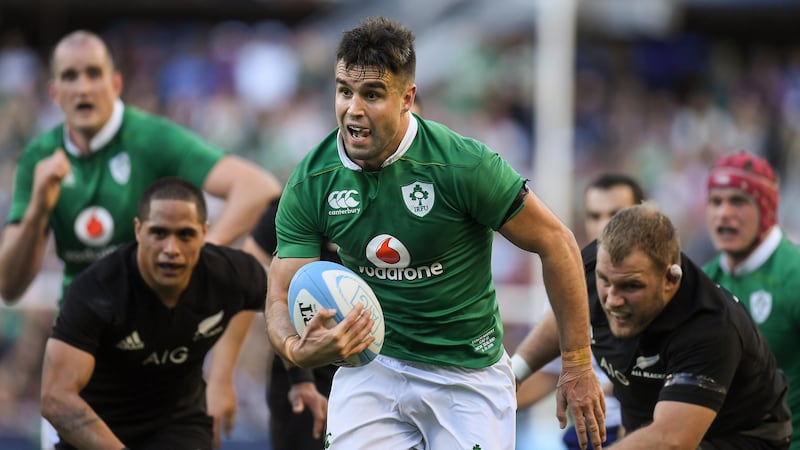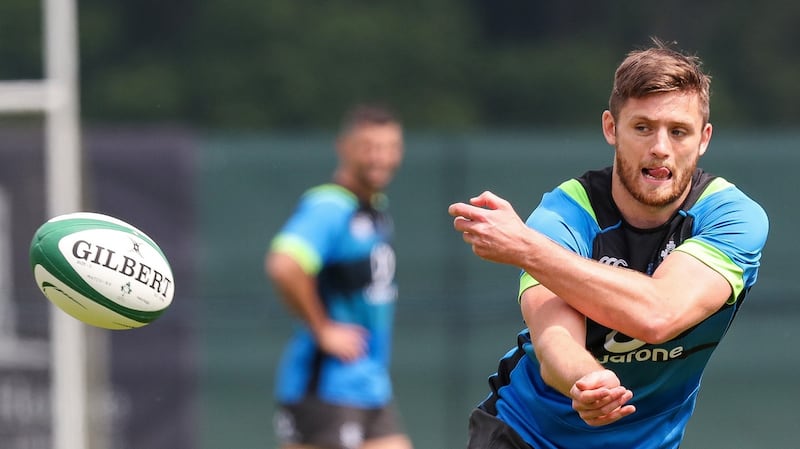When World Rugby's vice-chairman Agustin Pichot and CEO Brett Gosper recently described non-tournament Tests as "friendlies", it was a decidedly disingenuous description, and Pichot ought to know that as much as anyone.
Sure, it was in the context of promoting an annual 12-team international tournament, which would entail scrapping the June and November Test tours. Based on football’s new European Nations League, Pichot and Gosper want the top 12-ranked countries to contest an annual tournament hosted on an alternating basis in the Northern and Southern Hemispheres.
The teams would be split into four groups of three and the tournament would be played over five dates, with three for pool matches and two dates for the semifinals and final. A different country would host each pool, as World Rugby looks for ways to grow the international game’s revenue.
“At the moment 56 per cent of the games in international rugby in the world are friendlies,” said Gosper, “and that’s what we’re looking at and maybe swinging it back towards more meaningful, competitive games and that may be even with interaction between north and south.”
Aside from whether you might think this will detract from the Six Nations, Rugby Championship and most of all their own World Cup, unlike the discredited friendlies in international football, such a description falls way wide of the mark.
Allowing for the repechage tournament in Marseille, where Canada, Germany, Hong Kong and Kenya will compete for the 20th and last place at next year’s World Cup, there will be nothing “friendly” over the next month’s packed global window, not least on the 13 occasions countries from the Six Nations host those from the Rugby Championship.
There will be full houses every time for those, and this includes all three games at the Aviva Stadium, with scarcely a handful left for the USA game. One ventures that the ground could have been sold out twice over when New Zealand and Ireland, currently the world’s top two sides, meet there on November 17th.
There is another questionable aspect of World Rugby’s plans. While it will mean more meaningful Tests against Tier 1 countries for the Tier 2 countries who are ranked in the top ten in a given year, it may reduce the elbow room for head coaches to rotate their squads. This in turn could mean more strain on the front-line players.
The simple maths are that World Cup squads are restricted to 31. This is, therefore, the last window of opportunity
Akin to other countries in this November window perhaps, ideally Ireland would like to win all four matches and use all 42 players named in the squad last Wednesday. The games against Italy in Chicago’s Soldier’s Field next Saturday and against the USA on November 24th which bookend the month offer the most scope to dig deep into the squad and thereby expose more players to Test rugby.
The signs are that a nominal first-choice XV to start against Argentina in a fortnight and, by extension, ideally against the All Blacks as well a week later, will be excused duty in Chicago. That makes utter sense. A further pointer to this strategy was provided by the provincial team selections over the weekend.
Best scrumhalf
Schmidt’s hand has been forced further by the neck injury which has delayed Conor Murray’s seasonal reappearance until, hopefully, the end of the month.
The absence of the world’s best scrumhalf and best Irish No 9 of all time significantly reduces the chances of Ireland completing a clean sweep. In nine Tests against the All Blacks, Murray has scored four tries. This includes crucial tries in Ireland’s win in Chicago and the Lions’ win in Wellington in the second Test. Indeed, in his last five meetings with them, Murray has a highly creditable 2-1-2 record.
But all Test teams develop a degree of dependence on their world-class players. That's inevitable. Even the All Blacks couldn't stop playing Dan Carter in the 2004-2007 World Cup cycle, but that made them even more vulnerable in their quarter-final against France.
Hence, perhaps, Murray’s injury is at least partially beneficial. Since the last World Cup, Ireland have played 27 Tests against Tier 1 countries. Murray has started 26 of them, and more often than not played close to, or all, of the 80 minutes. For example, last season he started 10 out of Ireland’s 11 Tests, the exception being against Fiji, and of those 10 he played 70 minutes or more in all bar the 56-19 home win over Italy.

Kieran Marmion has 22 caps but only five starts, against Canada, USA, Japan, Italy and England, when performing more than efficiently in the 2017 Six Nations finale in Dublin. But that was two seasons ago. Of Luke McGrath's six caps, his only start was against Japan. John Cooney's two caps amount to eight minutes. He played only a minute in Australia, which was a minute more than Ross Byrne, an unused sub in the third Test.
No less than Murray, Ireland are, understandably, also Johnny Sexton-dependant, and in the Test arena Joey Carbery is almost as callow as Byrne.
The classy Carbery is making rapid strides, and in a position that simply requires more game time than most, his move to Munster is hastening his development. Of his dozen caps, only three have been from the off, against the USA, Fiji and Australia in last June’s first Test.
So, on a day given more emotional context by the likelihood of Ian McKinley featuring off the bench, the absence of Murray and Sexton next Saturday is no bad thing.
It doesn’t stop there. The simple maths are that World Cup squads are restricted to 31. This is, therefore, the last window of opportunity. It may merely help to finalise the back-up players, and in some cases the back-up to the back-up players, but as the last World Cup and that quarter-final against the Pumas demonstrated, a team could suddenly need a slew of them.
And the scope for further experimentation is almost negligible when defending a Six Nations title, with next year’s quartet of warm-up matches just that. In most positions, the ship will have sailed by then.
Line speed
No less than Byrne, amid the increasing Anglo-infused influence (nothing wrong with that) it will be interesting to see Will Addison and Sam Arnold in green, along with more of others, especially Tadhg Beirne.
With his ability to win turnovers and composure on the ball he looks ready for the Pumas and the All Blacks. For all the hype about the understandable All Blacks game, Argentina have already made strides under Mario Ledesma. Wins at home to South Africa and away to Australia were evidence of that.
“Yeah, big time,” agrees Murray, forced to watch it all from the sidelines. “When they played South Africa, the one in Argentina was impressive. Classic Argentinean stuff with their set-piece and their scrum, they are a team who put you under a lot of pressure, when you play against a team of such line speed, you realise how effective you can be when you do it, when you are on song, you almost make teams not want the ball.”
“Their finishers, they showed a lot of finishing ability, which they did in the World Cup in that quarter final,” added Murray, who admitted: “We probably put a lot of attention on their pack and what they do up front and they got around us early on a couple of times in that game.”

“The All Blacks are going to be a massive test, an unbelievably tough test, but the week before we play the All Blacks. It will not be ‘a warm up game’, it will be a proper Test match. And the Italian game, whatever side goes, that is a big test too. Italy are a side who have turned us over before. It is an exciting November and then building up to the All Blacks; whatever the USA brings too.”
The All Blacks were made to look fairly human when losing to South Africa in Wellington and again in Pretoria before mounting that extraordinary comeback to snatch a 32-30 win from 30-13 down.
“It shows they are human I suppose and the more you play them the more you realise that,” said Murray, from experience in his case.
But he adds: “They are just really, really clinical and South Africa just came with their game plan and Rassie [Erasmus] obviously did something to motivate them. No I don’t think their crown is slipping. I think they are still as good as they were. I think the gap might be closing. We’ll see.”
“Obviously South Africa proved that over the Rugby Championship and we get the next shot at it and hopefully we will get a good gauge on where things are at. It’s incredibly exciting. This game has been sold out for a long, long time and I’m looking forward to it.”
Cleverly, as well as picking a 52-man squad, the All Blacks are readying themselves for their end-of-year European tour with a two-leg, acclimatising, reconnaissance stopover mission in Japan against the Wallabies and the World Cup hosts.
Were they to win those games and also beat England in Twickenham the week before, and Ireland to beat Italy and Argentina, it will set up November 17th at the Aviva rather nicely.
Yep, as friendlies go, that one should be fairly competitive and meaningful alright.



















